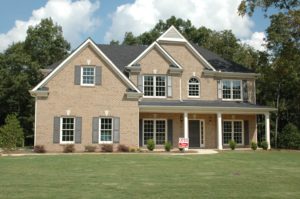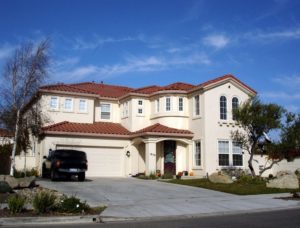The Growing Trend of Intergenerational Living
What is Intergenerational Living?
Intergenerational living is exactly what it sounds like, the practice of multiple generations living together. Typically we think of intergenerational living in terms of a single home that houses multiple generations of the owner's family. However, intergenerational living can also describe the types of communities we live in as well. For example, a neighborhood with many residents of various ages could be described as intergenerational, as people of different generations are all living together in the same area. However, a retirement community, or a children's boarding school, living arrangements that typically have a defined age range that residents must fall within---typically one small enough as to only account for a single generation at a given time---could NOT be considered an example of intergenerational living.
The 'Tradition' of Modernity
After the struggles of 2020 many families in the United States are now reconsidering how they traditionally envisioned single-family living. While for years now Americans have accepted a norm of seeing their children off from graduation, going on to build new lives and families in all parts of the country---hiring outside help such as nurses or care facilities once older relatives begin to require additional care----such arrangements weren't always so common place, nor have they been common places in many other parts of the globe.
With rising concerns over the affordability and reliability of both student housing and retirement care options, for many 2020 has spurred a return to a pre-WW2 definition of the family home. As a result, more and more people are considering housing plans that can accommodate these changing perspectives. One of the hottest new housing trends as a result is the multi-generational house. Although the nuclear family has been expanding in the past 20 years, with young and old family members increasingly coming together under one roof for practicality and companionship---these new houses are designed from the ground up with these family dynamics in mind.
The Modern Intergenerational House and It's Appeal
Rather than just adding bedrooms on to a conventional single-family home, or constructing fully independent structure, such as a guest home, on the same lot--the multigenerational house looks to balance the needs of family entertainment with the privacy and independence necessary for healthier multi-adult living.
Traditionally, one of America’s highest values has been independence, and this has been reflected in how we live. Teenagers long for adulthood as a way to escape the rules of their parents, adults seek healthy lifestyle options to ensure a level of fitness as they age that can mitigate potential disruptions of the independent lifestyle they already enjoy. However, as people reflect on the importance of the country and their communities coming together---so too are people reflecting on the importance of their families coming together.
The Consequences of Inner-generational Living (Living only with those close to one's own age)
Conventional wisdom tells us that there is much to learn from the trials and tribulations of our elders, and bold new ideas and inspiration to take from our youngest and most energetic. Yet here in modern America our lifestyles and housing have seldom reflected this ideal. Nursing homes and retirement communities have garnered a reputation now over several decades of encouraging disconnect and isolation between elders and their families. Of giving aging adults anxiety over signs of ailment, turning our natural needs for help and support into “risks” of a loss of greater autonomy that must be avoided by any means possible.
I am sure we’ve all had an experience with a relative or friend, one who no matter how minor the help they need may be, whether financial assistance or simple reading glasses, vehemently refuse the option under the assertion that they are still “capable” and therefor “don’t need help”. Yet the entire basis of society is that we do need help, that we all need help and support and encouragement to live as happily and healthily as we can be.
Perhaps then, with 2020 reminding us all of how much we can do for each other, and how much support we need from others around us----2021 will be the year when we reflect on how we understand these concepts of “help” and “support” and “capability” and “independence”, and how they aren’t mutually exclusive.
The Benefits of Intergenerational Living
If home is where the heart is than I believe that the growing rise of multigenerational homes is a long overdue reflection of this insight. The inclusion of larger kitchen spaces, multiple entertaining spaces, additional entrances and exits, and even additional home offices is reflective of not just a new style of cohabitation, but a new understanding of what it can mean to live with other adults.
Rather than just tacking on additional bedrooms, treating our adult relatives like guests or additional children, these suites offer a much needed compromise between independent and family living that allows for family members to support one another without sacrificing their greater freedom as adults. Older relatives no longer need to be relegated as “add-ons” to a pre-existing family dynamic, by allowing for multiple living spaces homeowners can invite their relatives to share in their adult freedom with their family, allowing the house to not be a castle but instead a community. More entrances allow for residents to better control their interaction levels, deciding when they do or don’t want to participate as a group.
With the rise in popularity of retirement communities, often boasting many different recreational activities as well as increased resident independence, it should be clear to Americans by now that the need for medical accommodations does not necessitate the end of social activity. Grandma can need a walk-in bathtub, AND can still see her friends on the weekend. By designing homes with extra living rooms and primary entrances, our relatives will no longer feel the need to fight as hard to prove what we should have already known: that just because your body slows down, your life doesn’t have to.
No properties found.
No properties found.



